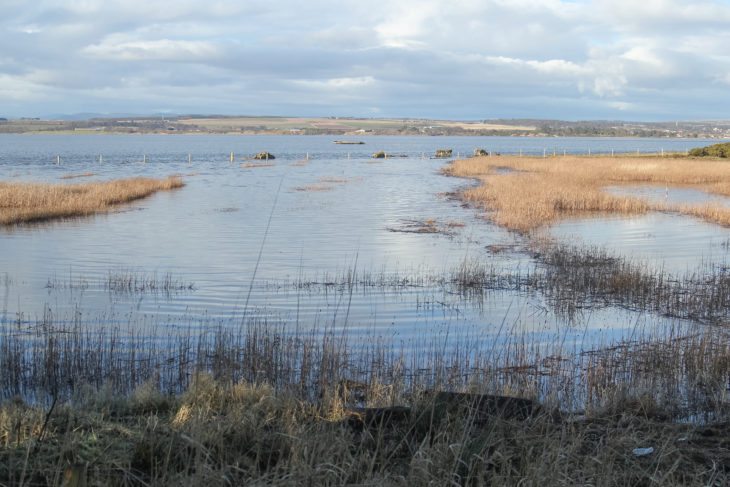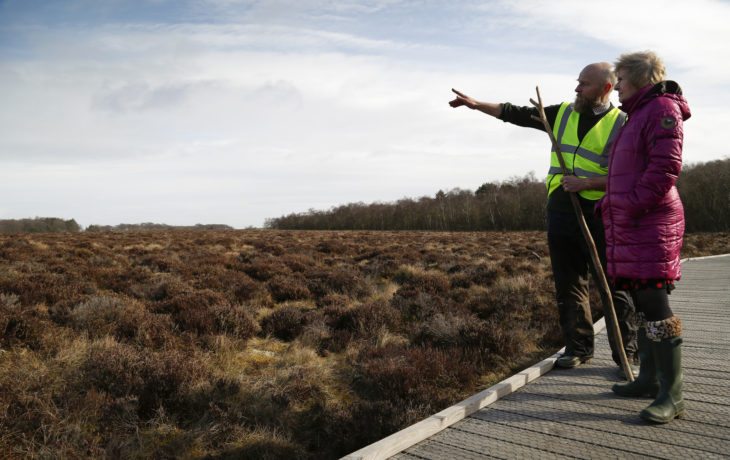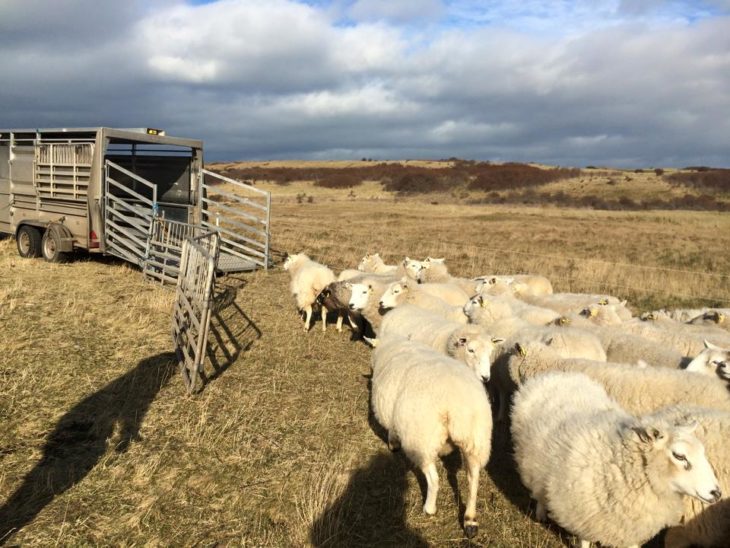What ever happened to Scotland’s Land Use Strategy?
How Scotland’s land is managed is so often a subject of heated debate. Farming versus forestry, grouse moors versus re-wilding, deer stalking versus woodland regeneration, wind farms versus unspoiled landscapes. Such polar opposite positions may seem intractable but if we can begin to move from argument to dialogue, perhaps we could begin to resolve decades’ old conflicts.
This was what Scotland’s Land Use Strategy (LUS) was designed to do. Launched with a fanfare back in 2011, it promised a new, more sustainable approach to land use based on the idea of ‘land-based businesses working with nature to contribute more to Scotland’s prosperity’. So what happened next?
For whatever reason, the strategy has suffered from political neglect and has not received the investment needed to make it work for all of Scotland. Given the change to the rural economy that Brexit will surely bring, there is now an urgent need for us to get the Land Use Strategy back on its feet.

We are demanding more and more from our finite supply of land, the development of onshore wind farms has continues to boom, various city region deals are investing in new homes and infrastructure, major flood events are forcing us to examine how we manage our water, we have international biodiversity targets to meet, and at the same time Scotland wants build on and improve its reputation as a clean, green food producer.
The LUS would help us navigate the trade-offs which will be needed, but also to find the kind of win-wins which could come from taking a more multi functional approach to land use.
Genuinely ground-breaking
When the concept of adopting a strategic and national approach to land management was proposed by the Scottish Government there were encouraging comments and reaction from lots of different groups who had interest in the stewardship of Scotland’s land. At the time I was studying at the Scottish Agricultural College and the idea of the Land Use Strategy was heralded as genuinely ground-breaking by my lecturers.
Scottish Environment Link, which represents more than 35 of Scotland’s environmental NGOs, was very supportive of the production of the strategy, and the Scottish Rural Property and Business Association (now Scottish Land and Estates) commended the Scottish Government for attempting to produce an overarching strategy for integrated land use in Scotland.

A revamped LUS gives us the ability to plan and prioritise not only traditional economic activity like growing food and feed, producing timber, generating energy and extracting minerals but also production of other essential ‘services’ from the land. These services include water regulation, carbon storage, climate change adaptation, habitats for wildlife and places for recreation and tourism.
Importantly the LUS allows us to optimise the delivery of these goods and services at a landscape scale and with input and guidance from stakeholders using Regional Land Use Partnerships.
The LUS can also help us achieve ecological coherence within landscapes and reduce the chance of creating barriers to species movement.
Achieving ecological coherence
Ecological coherence sounds like jargon – but it is a concept we must understand and make happen on the ground if we are to reverse the decline in Scotland’s wildlife.
Ecological networks made up of ‘patches’ of habitat in the landscape are important for the recovery of Scotland’s wildlife and for maintaining nature’s services on which Scotland’s prosperity depends. But these networks need to be coherent to function properly. That means they need to be connected in a way that wildlife can move from patch to patch freely and easily.
Ultimately the LUS could help deliver on the National Ecological Network and in turn this could help Scotland fulfil the Sustainable Development Goals and a range of national, EU and international commitments.
These commitments include supporting a landscape approach to tackling conservation issues, giving communities better access to high quality, wildlife rich greenspaces, providing opportunities to protect and enhance natural capital and improving the range and quality of ecosystem services.
All of this would benefit nature and, at the same time, it would make Scotland a more attractive place to live, do business, invest and visit.
The LUS is built upon the principles of the Ecosystem Approach, which takes a balanced look at the relationship between people and the natural environment in which they live and work and looks to create positive outcomes for people and the environment. This approach seeks to strengthen and maintain the services provided by the natural environment and also deliver on social and economic goals.
Economic and social aims can sometimes be viewed as being at odds with environmental protection, but the Ecosystem Approach looks to recognise interdependence and mutual benefits that can be achieved by working holistically.
With community and landowner buy-in we can begin to reinvest in our natural assets, using public funds when justifiable, and deliver locally on national and international goals such as our Aichi Biodiversity Targets and woodland expansion targets.
For example, the Scottish Government’s Draft Climate Change Plan, published in January 2017, proposes a target for future woodland expansion to cover 21% of Scotland by 2032. To deliver this, the draft plan proposes that the rate of new planting rises to 15,000 hectares per year by 2024.
Bearing in mind our other land use objectives, it is difficult to see how woodland creation targets and other objectives could be properly achieved and balanced without a robust LUS and Regional Land Use Partnerships.
Involving people is vital
Absolutely central to the LUS, and the Ecosystem Approach it enshrines, is the need to involve people in the decision making process. This includes not only those managing our land to provide ecosystem services but also those that benefit or are disadvantaged by certain land management practices. Local communities stand to benefit from the enhanced engagement opportunities and businesses, and land managers can build and plan around strategically agreed goals and targets.

In Scotland we have no shortage of examples of land management conflicts. Deer and grouse moor management, wildlife crime, locating renewable energy developments, and the distribution of rural subsidies are just some examples. Regional Land Use Partnerships could provide a constructive forum, focused on achieving shared outcomes, that could help resolve some conflict and agree regional priorities.
The Scottish Government has a desire to work towards a greater diversity of land ownership, including more community land ownership, high standards and transparency of land ownership and use, and greater collaboration and community engagement. The LUS provides the opportunity to give the land reform agenda a clearer purpose by providing a picture of what we want our land to look like and do in the future.
In the foreword to the 2011 LUS the then Cabinet Secretary for Rural Affairs, Food and Environment, Richard Lochhead, stated:
“A signal has been given to the Government that the great majority of those with an interest in land use see the need to move from a position where plans and decisions are made in isolation to an integrated – and hence more productive – approach to planning for the future uses of land. This is an exciting prospect and we all relish the challenge.”
My feeling is that the great majority of those with an interest in land use still very much see the need for integrated and holistic planning, and stand ready to support the Scottish Government in this endeavour.
Let’s inject some fresh energy
Unfortunately, and at exactly the wrong time, momentum on the LUS has been lost. Currently there are no dedicated staff within the Scottish Government really leading the delivery of the Land Use Strategy, and little dedicated funding.
Perhaps one way forward in the immediate future would be to bring together the Land Commission, SNH and SEPA and jointly task them with setting up a small number of Regional Land Use Partnerships that would be focused on tackling cross-sectoral issues.
This could be resourced through the above agencies Grant in Aid and would reassure everyone with an interest in the management of Scotland’s land that some form of strategic planning was taking place.
With Scotland on the eve of Brexit and the need to radically rethink our land management subsidy and policy combining with more pressures than ever being placed on a finite amount of land, this is exactly the right moment to inject fresh energy into the Land Use Strategy and roll out further local pilots.
Bruce Wilson
Acting Head of Policy
Help protect Scotland’s wildlife
Our work to save Scotland’s wildlife is made possible thanks to the generosity of our members and supporters.
Join today from just £3 a month to help protect the species you love.
Preface
How Scotland’s land is managed is so often a subject of heated debate. Farming versus forestry, grouse moors versus re-wilding, deer stalking versus woodland regeneration, wind farms versus unspoiled landscapes. …
